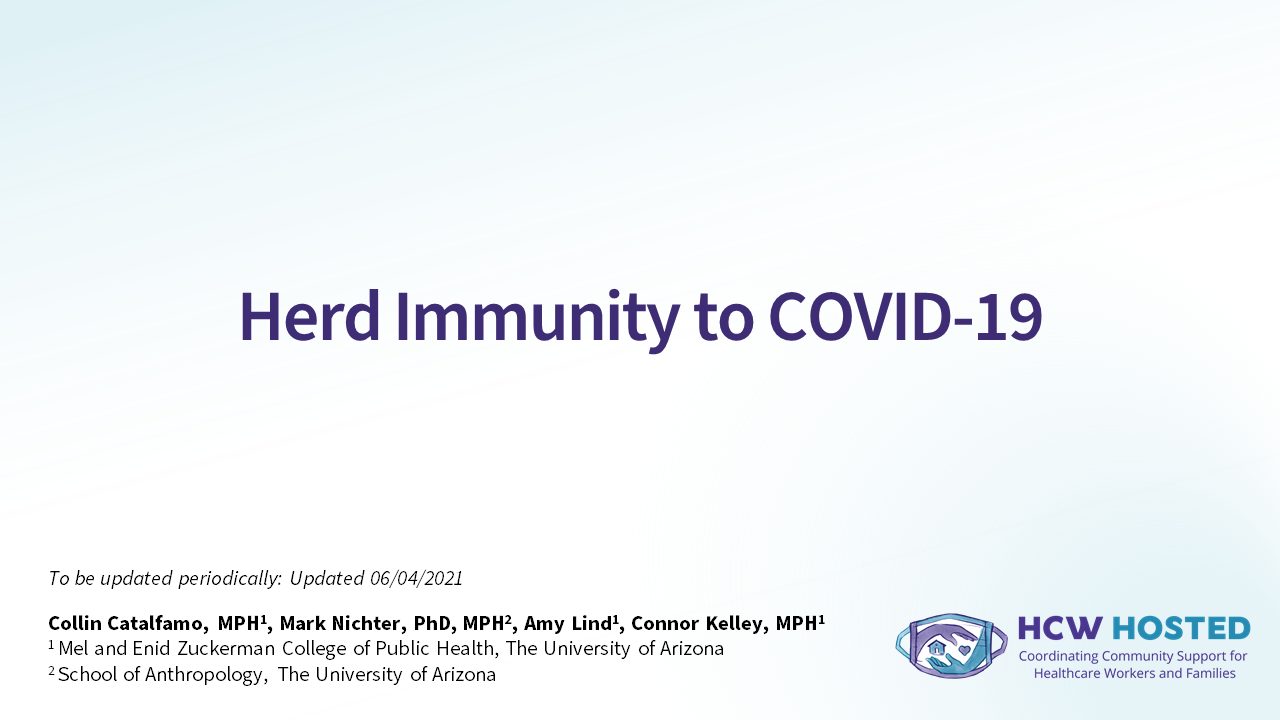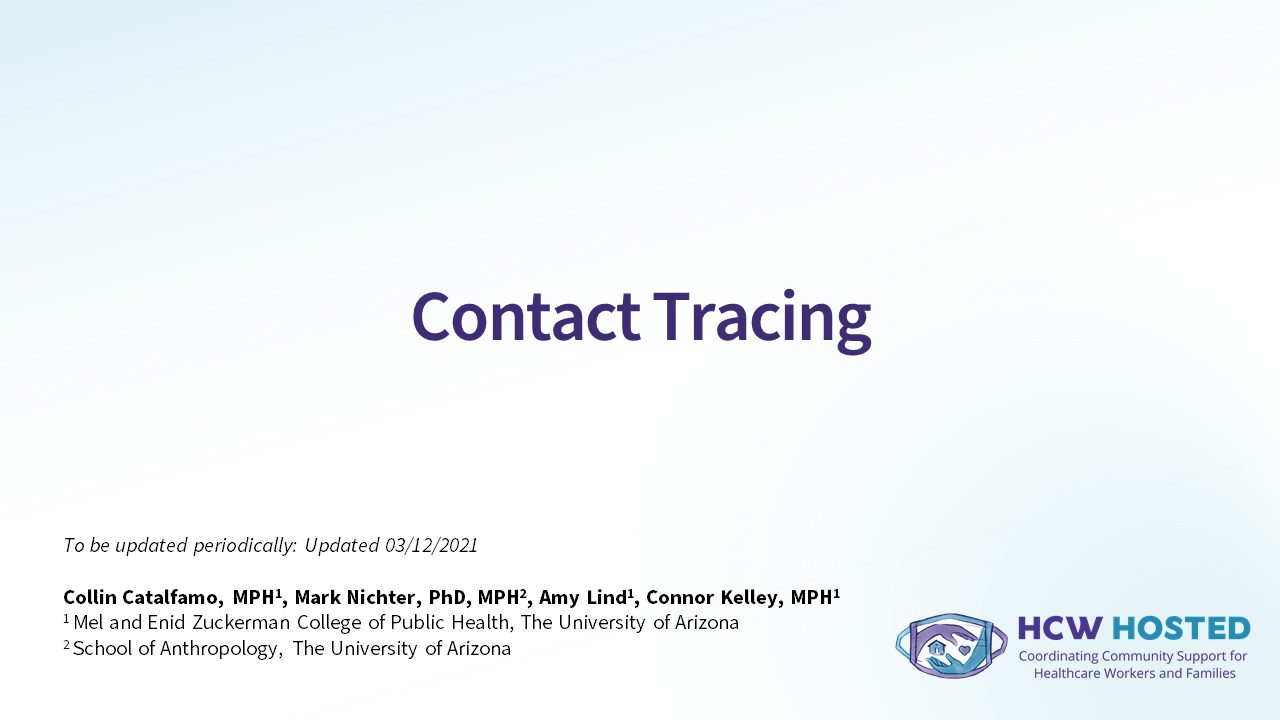Last updated by our Medical Anthropology & Epidemiology Team on 06.04.2021
HERD IMMUNITY
Herd immunity is “a situation in which a sufficient proportion of a population is immune to an infectious disease (through vaccination and/or prior illness) to make its spread from person to person unlikely.”
When a person becomes immune to a pathogen, they no longer spread that pathogen; this benefits everyone in their community, especially those who are unable to receive vaccination (such as newborns or those with chronic illness). Herd immunity is the best way for us to end the COVID-19 pandemic in the U.S. To achieve herd immunity, approximately 70% of the U.S. population would need to be immune to COVID-19. The safest way to achieve this is through vaccinating our communities.
To get back to “life as normal,” more than 200 million people in the U.S. would need to be immune to COVID-19. Even with current vaccination efforts, it will take time and be a challenge to achieve these numbers. Currently, COVID-19 vaccinations are not recommended for children under that age of 12 years (for Pfizer’s two dose vaccine). To reach herd immunity without vaccinating children, approximately 90% of the adult population must become immune.
However, the arrival of newer, more highly transmissible COVID-19 variants complicates the our path to herd immunity. To reduce transmission as much as possible, we must quickly vaccinate as much of the population as is eligible. If herd immunity is not reached, COVID-19 is likely to become an endemic virus with the potential for either seasonal trends or occasional outbreaks in susceptible populations.
Reduction of transmission now through vaccination and behavioral changes will keep people healthier later, even if COVID-19 becomes endemic. Until we can vaccinate enough people to achieve herd immunity, we must remain vigilant in wearing masks, reducing the number of people in your social bubble, and maintaining social distancing.
TESTING
Regardless of the level of vaccination in our communtiies is, consistent, widespread testing is key in identifying confirmed cases and any contacts they may have, which helps public health to identify cases early and prevent the spread of COVID-19.
Testing should not be limited just to those who have symptoms, because cases can have few symptoms or be asymptomatic.
There are two broad categories of tests for COVID-19. Diagnostic tests identify people who are currently infected with the virus and are capable of spreading it to others. Serological tests, which detect antibodies, show whether a person has been infected with COVID-19 at some point in the past. Note: a positive serological test does not indicate if a person is currently infected with the virus that causes COVID-19! They either were exposed to the virus in the past or underwent vaccination. Serological tests, while not helpful in determining who is currently infected, do have many other important uses such as identifying past asymptomatic infections (as well as those who have recovered).
There are two types of diagnostic tests are used in the U.S. Polymerase Chain Reaction tests (PCR tests), are considered the gold standard to determine if you are actively infected. Antigen tests, sometimes called Rapid Tests, are faster and cheaper than PCR tests but still maintain high specificity (i.e. a low rate of false negatives). Remember: a diagnostic test only gives you information about a single point in time – this is why retesting is recommended.
Diagnostic tests can, albeit rarely if perfomed at the appropriate time, result in a false negative result. The most common reason for this is that the test was performed too early in the illness, so it is recommended you wait 3-5 days after your exposure to get tested. If you have been exposed to someone with a known infection of or symptoms consistent with COVID-19 illness, it is recommended you receive either a PCR test or an antigen test.
How often you re-test depends on your occupation, volunteer work, and diagnostic testing availability. People who have jobs with high risk of exposure to infection (such as first responders and healthcare workers) are retested frequently with PCR tests, while people who have jobs with low risk of exposure to infection (such as office workers) may only need to be retested if they have been exposed or begin to show symptoms. Serology retesting is likely to be infrequent since serology tests are not used for diagnostic purposes and only reveal if you have had an infection or vaccine in the past.
CONTACT TRACING
Contact tracing is a public health process that is vital to curbing and preventing outbreaks of infectious diseases (i.e. illnesses that can be passed from person to person). In contact tracing, individuals who may have been exposed to an illness are identified and notified of their exposure. This allows these individuals to take precautionary measures, such as getting tested and self-isolating. These early precautionary measures can reduce or prevent disease transmission to other people.
Contact tracing is performed for reportable illnesses, which are defined by our health departments. A reportable illness is considered of public health importance due to its ability to spread throughout a community and potentially cause significant harm. In contact tracing, an individual who has tested positive for the virus identifies other persons they may have exposed to the virus; these identified persons are informed that they may have been exposed and are instructed to get tested and begin self-isolation. The confidentiality of those who test positive is maintained in the contact tracing process! Contact tracers, when notifying identified contacts, do not tell them who exposed them; this maintains the security of their Protected Health Information.
To truly understand outbreaks and prevent further surges in case numbers, we need both robust contact tracing efforts and robust testing.
In Arizona, if you test positive for SARS-CoV-2 through a PCR or rapid test, your results are automatically reported to the state health department because COVID-19 is classified as a reportable illness. Once the state receives your test result, contact tracers from the health department will contact you and ask questions about your illness and who you may have spent time with prior to testing positive. The information you give helps the health department reach out to any contacts you may have had, informing them they should get tested and begin self-isolation.
The CDC defines close contact as being within 6 feet of a confirmed positive case for 15 minutes total over the course of 24 hours, between 2 days prior to their symptom onset (or, if asymptomatic, positive test date) up to 7 days after.
To assist with contact tracing, a number of apps have been created that can greatly increase your chances of finding out if you were exposed to the virus. Choosing to opt in to these apps can help you receive early warning of possible exposures, helping your friends and families avoid getting exposed and/or infected.
For more detailed information regarding Herd Immunity, Testing for COVID-19, or Contact Tracing you can read our summaries of the latest vaccine research and news (presentations will open in a new window or tab) or view our responses to frequently asked questions below.



